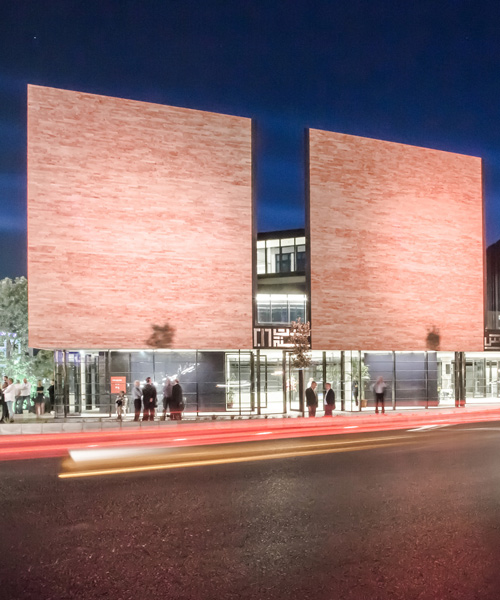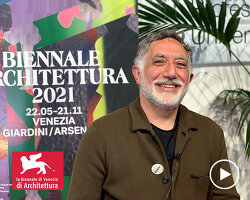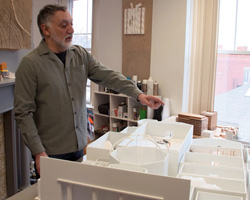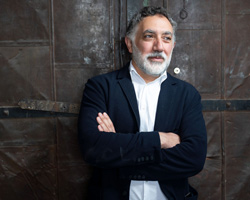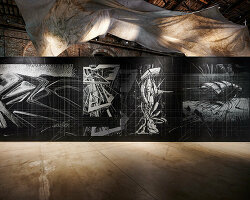hashim sarkis — the lebanese architect and dean of the school of architecture and planning at MIT — has been appointed curator of the 2020 venice architecture biennale. sarkis follows in the footsteps of yvonne farrell and shelley mcnamara of grafton architects who directed the 2018 edition of the event, and alejandro aravena who curated the 2016 exhibition.
in addition to his role at MIT, sarkis is also the principal architect of hashim sarkis studios (HSS), established in 1998 with offices in boston and beirut. below, we take a closer look at four of the firm’s most significant projects to date.
byblos town hall
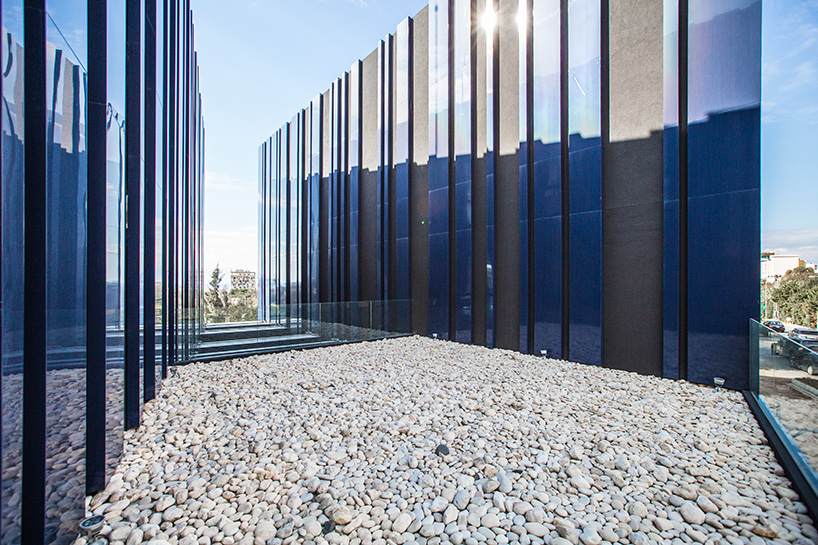
byblos town hall, byblos, lebanon, 2016 | image by wissam chaaya (also main image)
after an anonymous open competition, hashim sarkis was selected to design a town hall for byblos — one of the world’s oldest continuously inhabited cities. the building is broken down into three large blocks that each house a different component of the program: the municipal departments, the municipal council offices, and an interactive museum. the building is connected at ground level, while the gaps between the blocks bring light inside. the project was completed in 2016.
balloon landing park
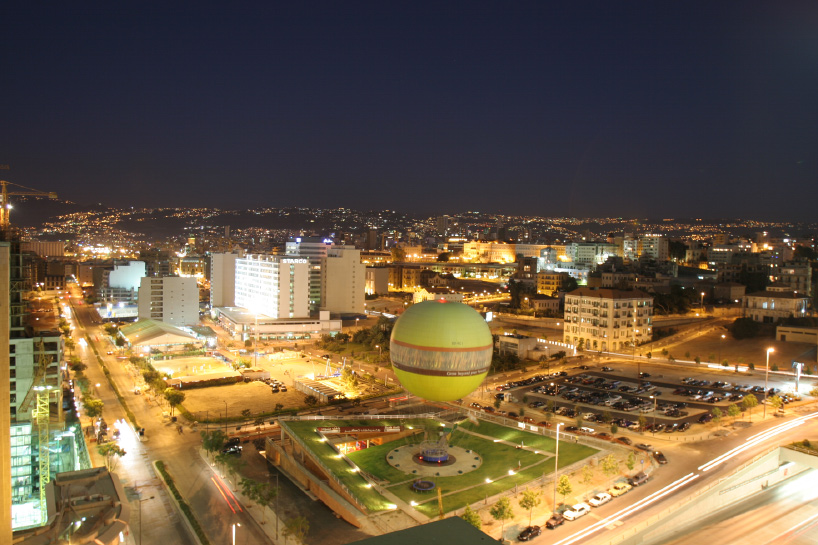
balloon landing park, beirut, lebanon, 2004 | image by joumana arab
completed in 2004, this project in beirut serves as a tethered helium balloon that takes passengers 300 meters above the city and then descends in less than 15 minutes. instead of encumbering the ground with kiosks and disturbing the visual presence of the balloon, the project uses the natural slope of the site to tuck the kiosks under the landing platform while keeping it accessible from the lower end of the site.
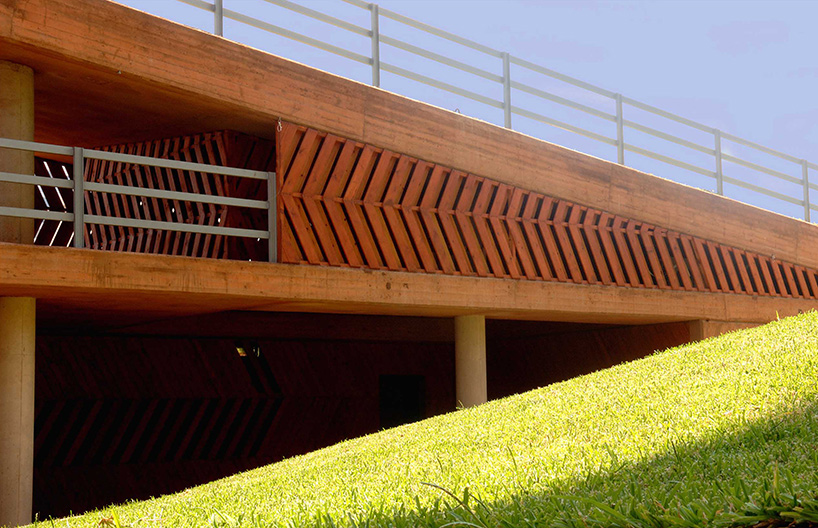
balloon landing park, beirut, lebanon, 2004 | image by joumana arab
under the platform is a café and waiting area, video games, ticket booths, and service facilities. ‘the physical clearing is maintained by exaggerating the emptiness of the ground,’ explains the design team. ‘the balloon peels the ground off revealing a multiplicity of strata. in the city, a definitive ground level is no longer possible. instead, multiple layers of grounds are revealed as when one approaches the balloon on the ground.’
housing for the fishermen of tyre
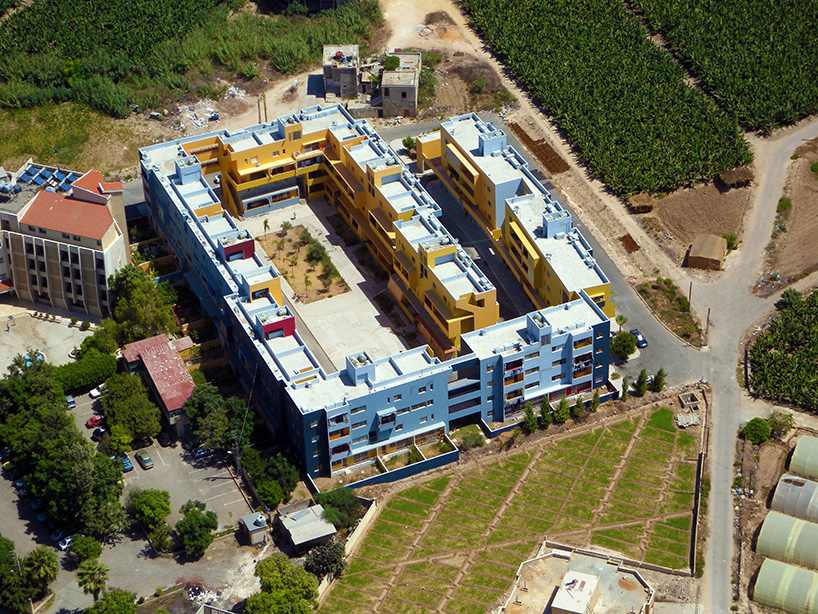
tyre fisherman’s housing, abbasiyeh, lebanon, 2008 | image by jean yasmine
the edge of this residential project for local fishermen wraps in on itself creating an internal road and an open space. the road continues the side street, provides access to the units, and connects the two main access points. the open space provides a common public garden and a playground. however, in order to avoid a closed, urban-block effect, the linear mass is broken down into a series of buildings separated by gaps that are used for public circulation.
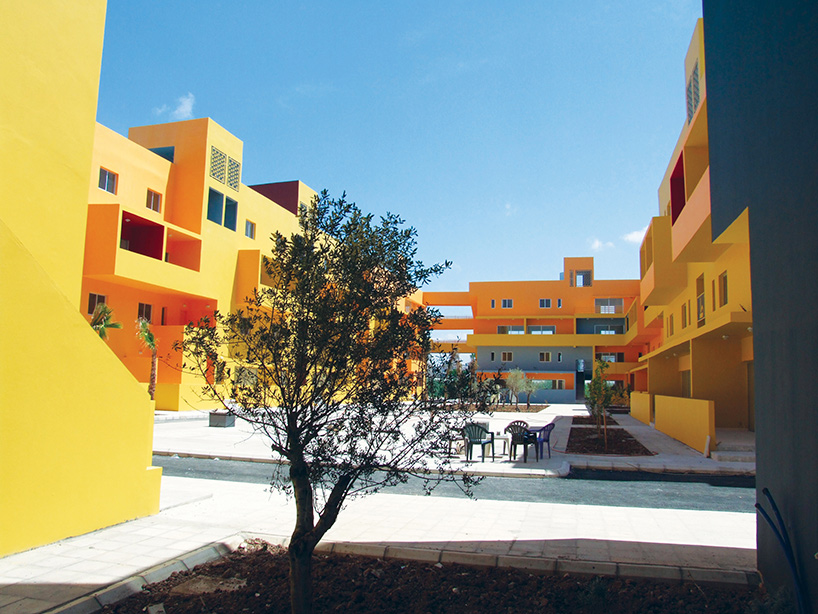
tyre fisherman’s housing, abbasiyeh, lebanon, 2008 | image by joumana arab
‘these spaces provide variety within the building volume,’ HSS says. ‘the corners are treated differently in response to different external conditions. one of the main concerns of the fishermen was to maintain equality among the units. in order to provide for equality, particularly in terms of access to private outdoor space and access to view, the units had to be different depending on their location in plan.’ in total, the project consists of 80 two-bedroom units.
the courtowers
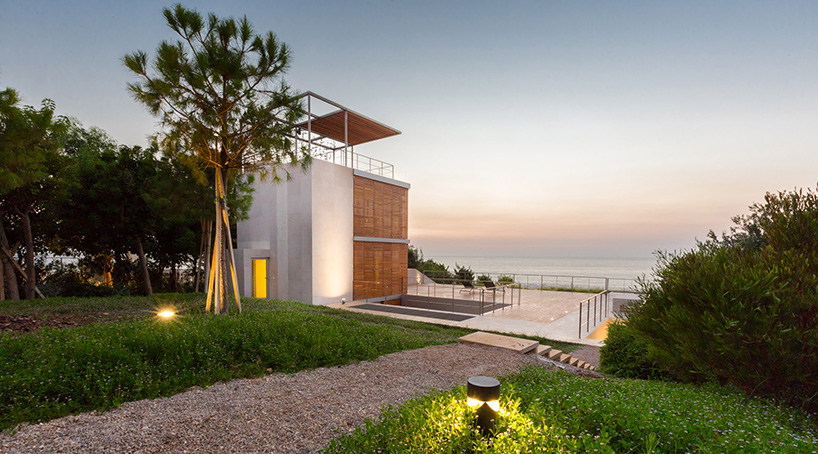
the courtowers, lebanon, 2017 | image by wissam chaaya
completed in 2017, this project consists of four single-family houses on the coast of aamchit, lebanon as well as the rehabilitation of the existing landscape and old houses. ‘the site slopes west towards the mediterranean, its angle allowing for embedding the houses in the landscape in such a way that the front is open to the view and breeze whereas the other sides of the house are protected by earth,’ explain the architects.
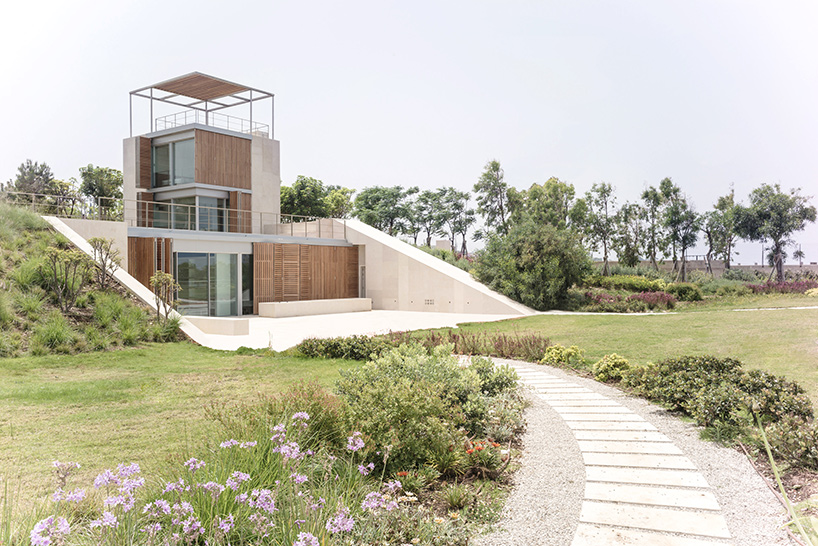
the courtowers, lebanon, 2017 | image by wissam chaaya
each house consists of a double-layer wall that retains the earth from the east and slopes with the land north and south. a tower provides shading, while simultaneously functioning as a chimney to release the heat from the courtyard and the bedrooms. ‘the combination of the courtyard and tower produces a new house typology that is used with degrees of variation on the site as the development grows around its common facilities and the sea,’ HSS says.
